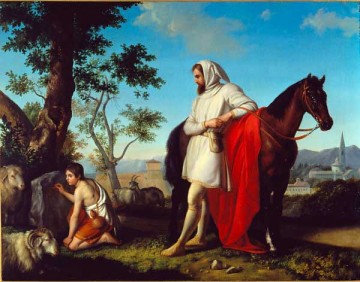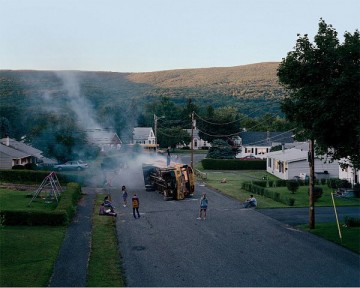
I tried to write this blog post in the form of a story. The approach would have fit the topic: an upcoming conference at the Clark Art Institute on the relationship between fiction and art history. Somehow I couldn’t manage. Or maybe I wasn’t comfortable. I always feel uneasy about writing stories. They lack precision, thoroughness, and verifiability. Or am I reassuring myself here? Are these the self-justifying words of an art history student who doubts the rigorousness of his own methods? Am I nervously denying my propensity for narrative because it sounds unseemly? If we allow stories into the history of art, then what would that say about the people who want to make this “storytelling” their profession?
Fictions of Art History deals with these sorts of questions. At its most fundamental level, the conference asks what it is that art historians actually do. In order to examine fiction in relation to art history, we need to consider the origins of art history itself. Many of the early models of the discipline take narrative form. For instance, when Giorgio Vasari wrote The Lives of the Most Excellent Italian Painters, Sculptors, and Architects, from Cimabue to Our Times (1550), he created a foundation for the history of art as biographical semi-fiction.
We now know enough to question the content of Vasari’s accounts, yet they continue to maintain a powerful grip on us. When Vasari tells us that Giotto fooled Cimabue by painting a perfectly realistic fly on one of the elder master’s works, I want to believe the legend. Or at least I want to find an excuse to retell it. Of course we can invoke such stories as meaningful evidence of the mythology surrounding an artist, providing the disclaimer that they offer little information about the reality of history. Yes, I can say to myself, I am not perpetuating the myth but interrogating it through my carefully honed skills of analytic fact checking.

According to legend, Cimabue discovered the young shepard Giotto drawing in the fields. Painting by Gaetano Sabatelli.
Analytic fact checking, though, has an unsatisfying ring to it. It certainly doesn’t provide an attractive slogan for the student of art history. Where is the life in facts? The endurance of Vasari’s Lives surely has something to do with its liveliness. If the stories are deficient in truth, then at least they got something right in their capacity to hold our attention. As conference participant Paul Barolsky has previously suggested, art historians’ attachment to stories may betray our suppressed imaginative inclinations. We slyly indulge these interests by revisiting figures like Vasari, who allow us to vicariously escape the analytic methods to which we feel bound.
It wasn’t always this way. I used to openly and comfortably craft stories about art. As an undergraduate, I majored in printmaking and regularly needed to explain my own work in narrative terms. In critiques, I found the easiest way to justify my pictures was through personal anecdotes, tales of agony in the studio, and accounts of miraculous inspiration. Stories felt like my medium as much as anything else. A convincing tale produced a powerful picture. The numerous contemporary artists who inscribe narratives within their artwork (like conference speaker Gregory Crewdson, for example) only seem to confirm this impulse to integrate art and fiction.
When I began taking art history courses, on the other hand, I immediately turned against the narratives and myths that artists bring to bear on their own work. Pictures ought to be treated as visual objects rather than verbal constructions, I thought. Putting the principle into practice was another matter. In turning away from the life of the artist, I found myself increasingly telling stories about the life of the object, or the life I ascribed to the object. Even if we reject a biographically oriented tradition of art history, we’ll still be hard pressed to avoid the narrative implications of putting words in the missing mouths of pictures.
Art history still hasn’t found a purely “visual language”—an oxymoron that might capture something of its impossibility. What, after all, is the language of pictures? Lines, planes, and forms all have their use in pictorial description, but they don’t entirely explain pictures. Even if we could figure out a visual code uniquely appropriate for deciphering art, I wonder if we would resist reconstituting our findings in narrative form. We only need to look to the invented field of “symbolology” in Dan Brown’s The Da Vinci Code to understand how pictorial investigation gives way to the fictional imagination. Novelists, poets, and literary theorists like Marina Warner, Cole Swensen, and Marianna Torgovnick (who will all speak at the Clark conference) provide numerous other examples of the fictional possibilities found in art and the methods of art historical research.
While fiction may have embraced art history, I’m still ambivalent about art history’s relationship to fiction. That ambivalence, though, may not be so healthy. In my failed attempt to write this blog post in narrative form, I realize I wrote something like a sad little story—a meta-account of my own troubled relationship with stories. In a characteristically academic move, I’ve stepped outside my problem and pointed back towards it. Until I’ve dealt with that conflict, I’ll be stuck telling stories about stories about pictures.
The 2010 Clark Conference, Fictions of Art History, will take place on October 29 and 30 at the Sterling and Francine Clark Art Institute, 225 South Street in Williamstown, MA. Click here for more information.





Pingback: Open Enrollment: Words | Art21 Blog